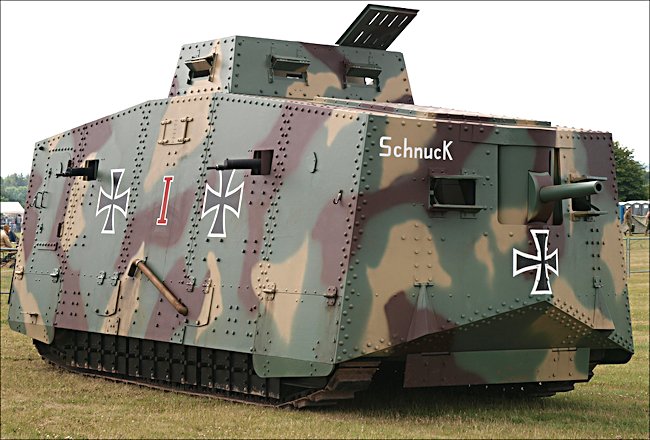You are using an out of date browser. It may not display this or other websites correctly.
You should upgrade or use an alternative browser.
You should upgrade or use an alternative browser.
Photos of the Kaiserreich
- Thread starter pattontank12
- Start date
FanOfHistory
Banned

An image from Battlefield 1. This particular image comes from the war story where you play as a German soldier during the German 1919 Spring Offensive
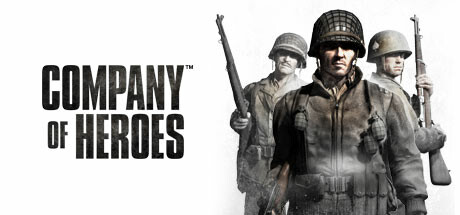
Promotional image for the 2006 game Company of Heroes a a real-time strategy game developed by the German game developer Zerbrochene Spiele and published by PSA publisher Electronic Arts Inc. The game was made on the top of the line Wilhelm Engine with DirectX11 support, one of the first games to have it. The game was praised for its innovative control system and innovation in the largely till then stagnant genre and having a amazing story with an unflinching portrayal of the brutality of the War. The story itself is actually two, one following the recollections of one Thomas Adson, a colonel in the Heer during the Invasion of France in the opening years of the Second Weltkrieg. You control 1st Squadron and lead through them the apocalyptic Battle of the Somme, across the River of Blood and the Killing Fields of Bastogne and the Siege and Battle of Paris, among a handful of other skirmishes. The game explores the Jacobin's Re-Education Camps, the horrors their purges had on the populace and the fanatic, suicidal devotion to the cause of the now infamous Peoples Protection Battalions. After finishing the story you come to find out that Adson is himself in one of the Kamarilla's extra-judicial prisons in Mittelafrika giving the player a glimpse into the brutality of the Schleicher Era. The game was met with widespread aclaim in the regions it was released even when met with heavy censorship in places like Russia and the Princely Federation. In Germany however the game was met with a lot of controversy due to its ending implication that Adson was one of the thousands now called 'The Vanished'. While many praised its unflinching criticism of the Schleicher and Kamarilla; many conservative politicians and a few National Protection Front members defend Schleicher saying he 'did what had to be done' to fight the Syndicalist threat. The Kaiser even chimed in applauding the game in its bravery in talking about such a controversial topic. In the end the game met a large degree of success and spawned a few FreeLC's adding campaigns in India, the Second US Civil War and the Second Russian Civil War.
The Second Campaign envisioned a world where the Commune was able to blunt the Reikspakt assault and punch across the Ludendorff Line and enter Berlin. In the game you are Pierre Lucroix telling his grand kids about his time in the Red Army leading an elite PPB unit. You start blunting the assault into the Somme, fight across the Rhine and into Elsas-Lorringen, undergo a house to house battle in Metz and then you fight a three stage battle around Berlin culimating in leading your troops into the Reichstag and capturing the Kaiser forcing the surrender of Germany. This campaign also has a few other skirmishes thrown in and also brought about its fair amount of controversy. In more than a few post-Syndicalist nations EA had to fight to not have it censored due to it maybe casting to good a light on Syndicalism, even though it did not. In the places it was published with no problems however many people had issue with the now infamous mission "Clearance" where you are tasked with rounding up gangs of innocent civilians in a unnamed village in Germany and executing them in retaliation for a Resistance strike on a local supply base. The mission was called insensitive and evil by its detractors and a lesson from history by its supporters. Ultimately the mission was censored in Germany and Poland but German players can get the Austrian copy of the game with the mission. Polish players have a variety of torrent Polish translations on the internet to download.
Some of the armies of the Second Weltkrieg allies of the German Empire.

Soldiers of the Danish Army of the Second Weltkrieg.

Soldiers of the Norwegian Army of the Second Weltkrieg.

Soldiers of the Dutch Army of the Second Weltkrieg.

Soldiers of the Belgian Army of the Second Weltkrieg. The Kingdom of Belgium was restored with German consent on September 17, 1936.

Soldiers of the Danish Army of the Second Weltkrieg.

Soldiers of the Norwegian Army of the Second Weltkrieg.

Soldiers of the Dutch Army of the Second Weltkrieg.

Soldiers of the Belgian Army of the Second Weltkrieg. The Kingdom of Belgium was restored with German consent on September 17, 1936.
From the history of Canadian literature - pulp gothic
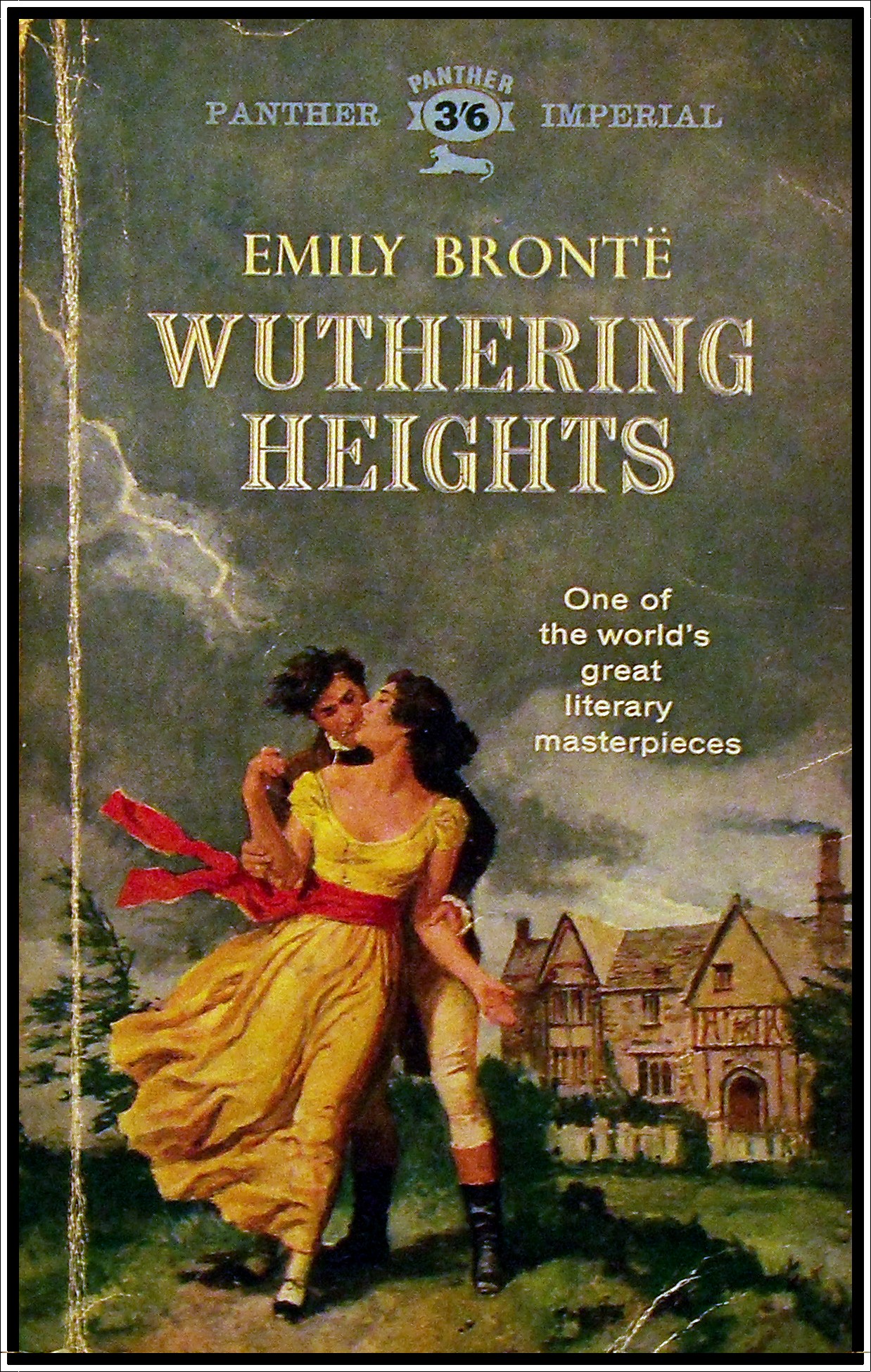
The revolution in Britain has become for many traditional Englishmen - traditions, customs, culture, arts ... Everything could disappear. Having fled to Canada, the British conservatives began to work actively on the "salvation" of English culture, which reactivated many of the directions of English art - including Gothic fiction.

Having lost hope in the present, people tried to regain their past by using novels filled with ancient castles, sensitive heroines and romantic villains. That convinced not only to read old novels, but to write new ones.
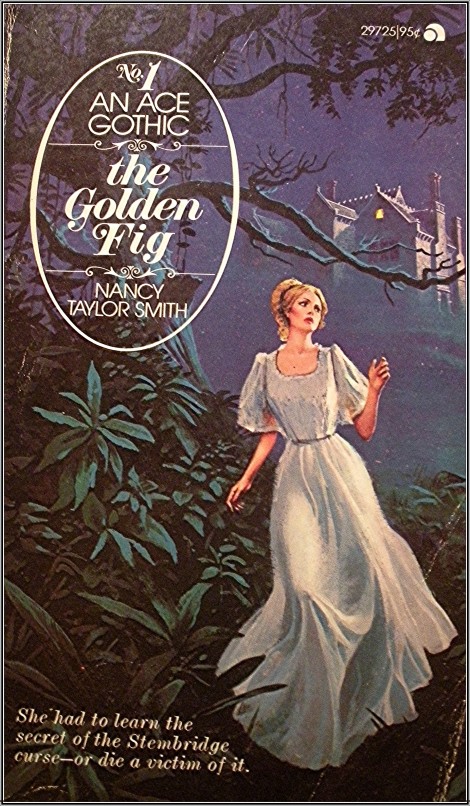
Next door was the United States, a country where a culture of mass entertainment was developing rapidly. Canadian publishers have noticed that like Americans, literature can be published quickly, on cheap paper and sold in large editions. As a result, there were cheap novels for women, poured by riddles and pathological love connections.
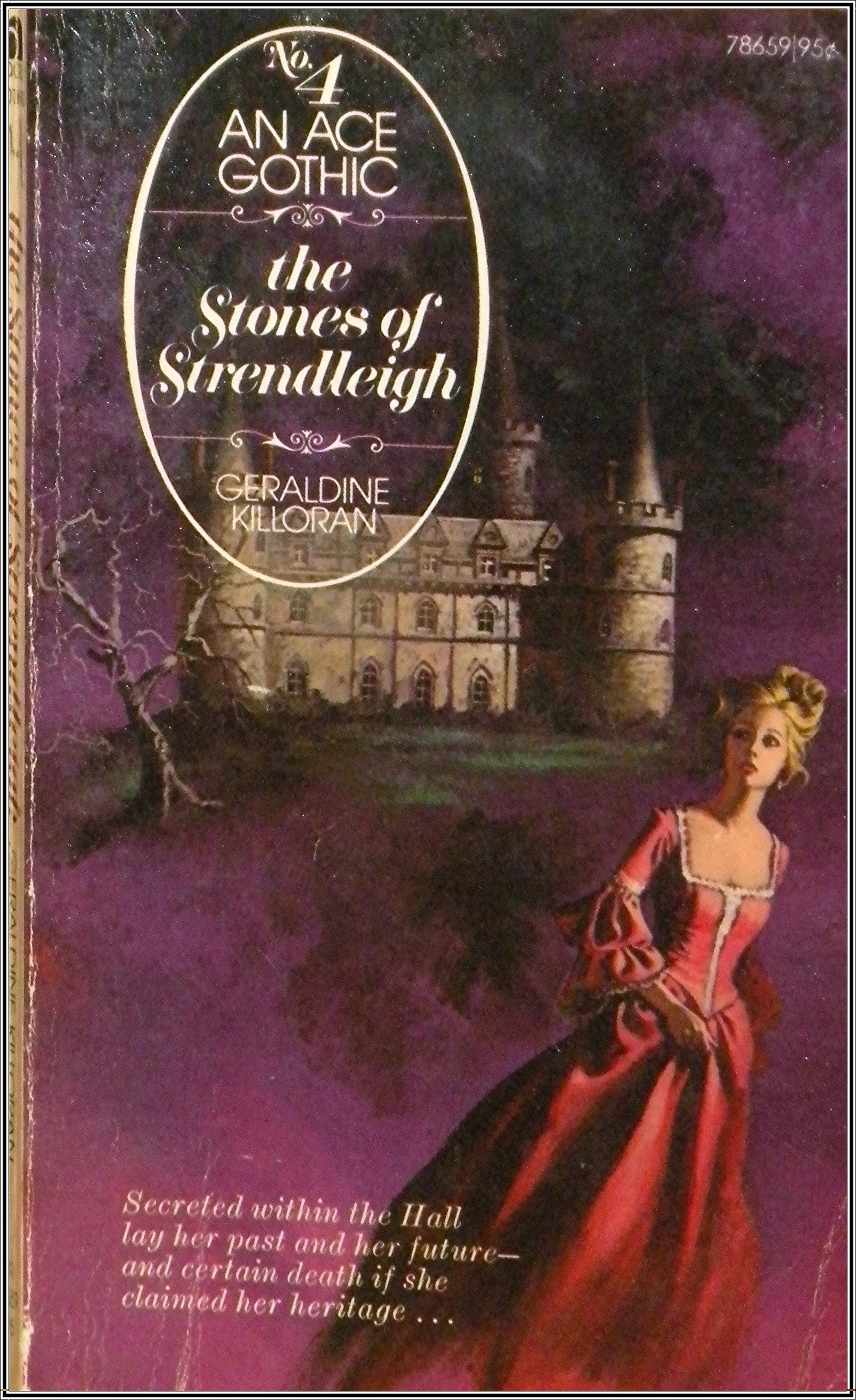
Despite the obvious imitation of sentimentalistic and romantic literature, the mass neo-gothic of the 1920s-1930s had a number of characteristically distinctive features. Firstly, such novels were necessarily written in the first person, so that between the heroine and the reader the identity of sensations arose. Secondly, the "Byronic" type was not necessarily a villain - often he was the love interest of the main character, and like Mr. Edward Rochester, he loved the "damsel in distress".
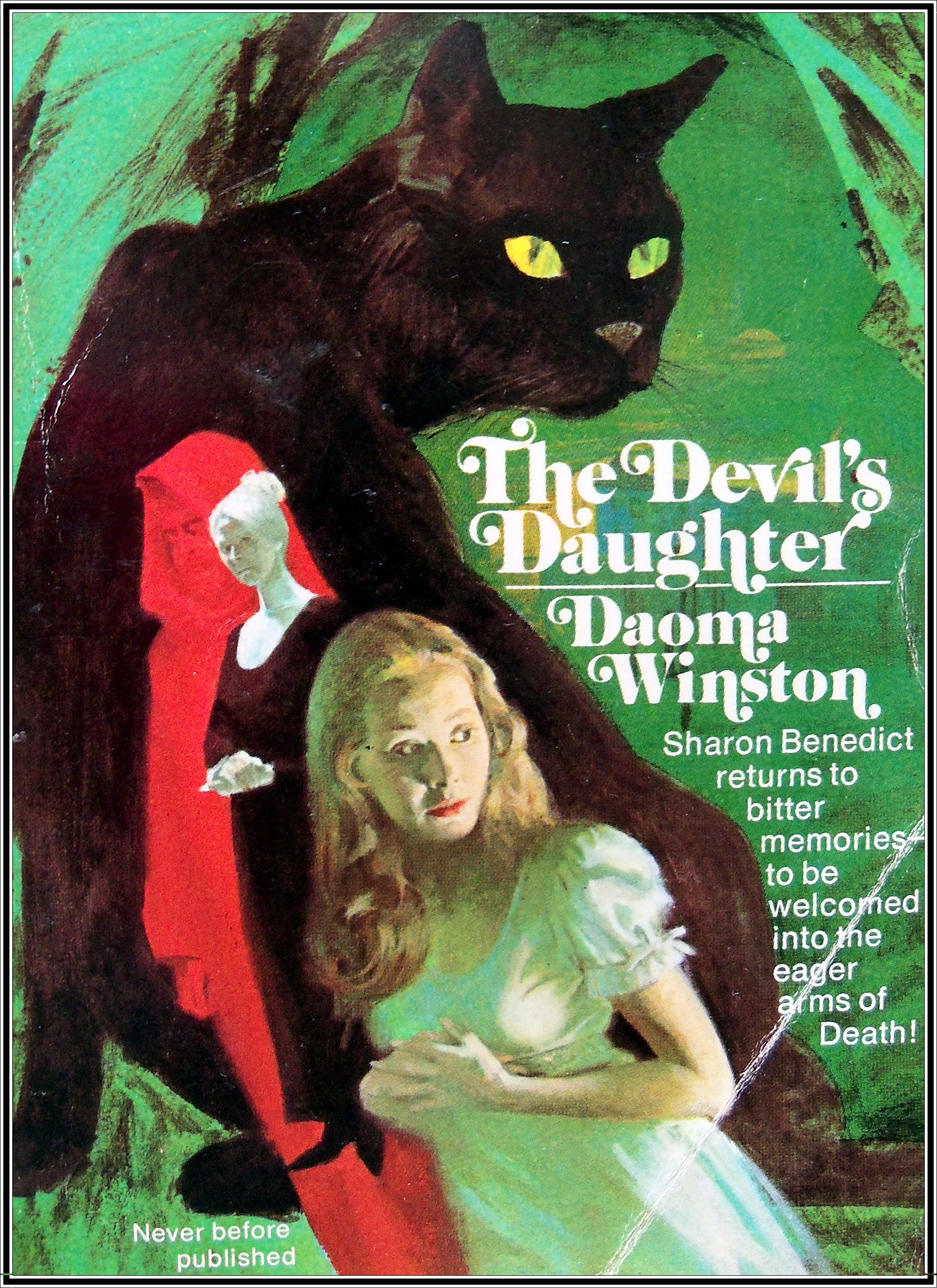
After the revolution, the genre began to lose relevance, by the end of the 40s, "ladies' gothic" was a thing of the past. For a long time, the function of this literature was performed by the "Southern Gothic" - a kind of Gothic fiction, where the action took place against the background of the decaying South, and the narrative was filled with analysis of social and cultural problems.
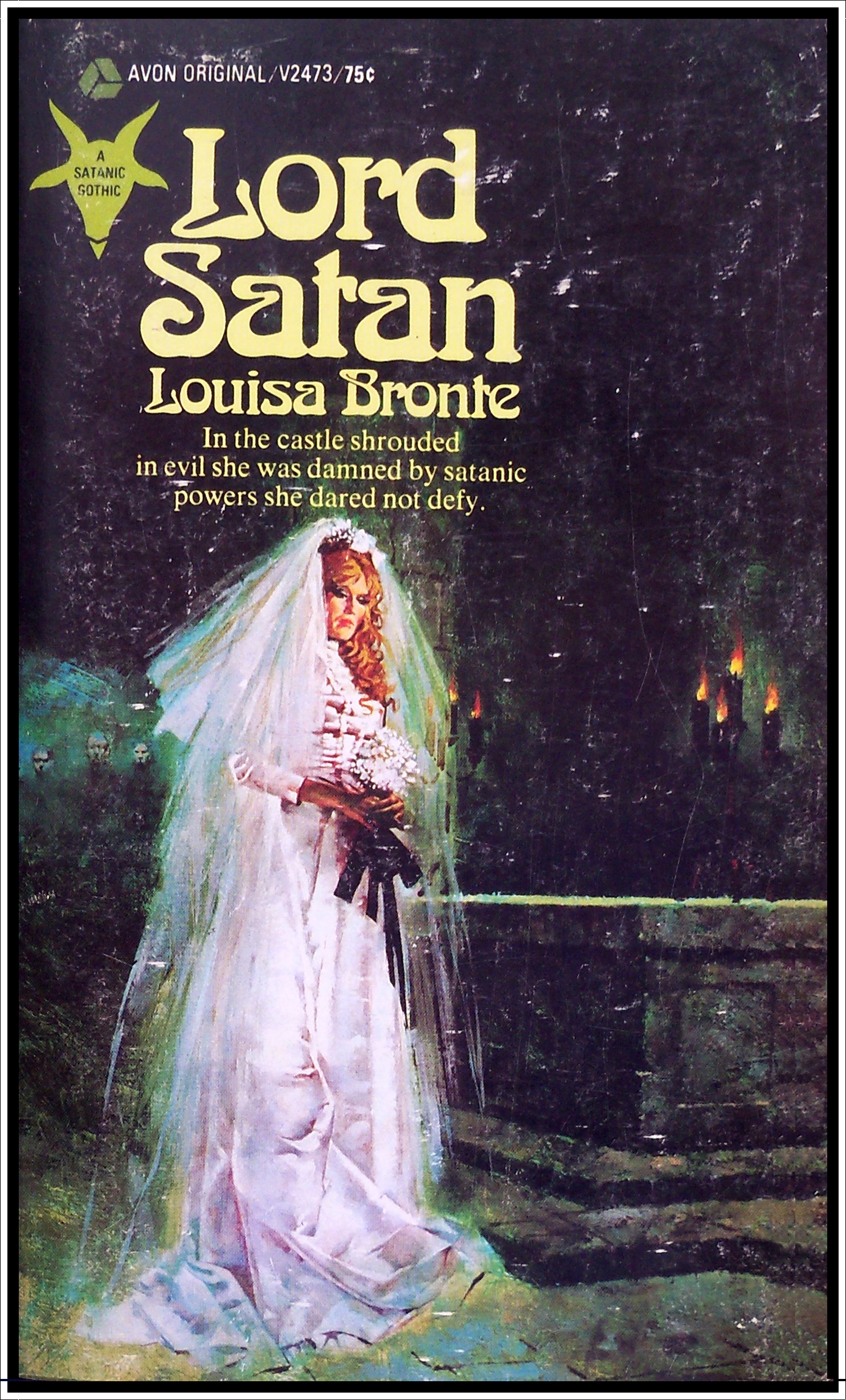
American literary critics on various assessments of such literature, some argue that pulp gothic literature was filled with gender stereotypes and aesthetics of aristocratic heritage. Others believe that this trend has revealed the properties of women's being in a patriarchal society, and they note that "many male writers have taken female pseudonyms for themselves - there was a need to compare their feelings and thoughts with women's experiences."

The revolution in Britain has become for many traditional Englishmen - traditions, customs, culture, arts ... Everything could disappear. Having fled to Canada, the British conservatives began to work actively on the "salvation" of English culture, which reactivated many of the directions of English art - including Gothic fiction.

Having lost hope in the present, people tried to regain their past by using novels filled with ancient castles, sensitive heroines and romantic villains. That convinced not only to read old novels, but to write new ones.

Next door was the United States, a country where a culture of mass entertainment was developing rapidly. Canadian publishers have noticed that like Americans, literature can be published quickly, on cheap paper and sold in large editions. As a result, there were cheap novels for women, poured by riddles and pathological love connections.

Despite the obvious imitation of sentimentalistic and romantic literature, the mass neo-gothic of the 1920s-1930s had a number of characteristically distinctive features. Firstly, such novels were necessarily written in the first person, so that between the heroine and the reader the identity of sensations arose. Secondly, the "Byronic" type was not necessarily a villain - often he was the love interest of the main character, and like Mr. Edward Rochester, he loved the "damsel in distress".

After the revolution, the genre began to lose relevance, by the end of the 40s, "ladies' gothic" was a thing of the past. For a long time, the function of this literature was performed by the "Southern Gothic" - a kind of Gothic fiction, where the action took place against the background of the decaying South, and the narrative was filled with analysis of social and cultural problems.

American literary critics on various assessments of such literature, some argue that pulp gothic literature was filled with gender stereotypes and aesthetics of aristocratic heritage. Others believe that this trend has revealed the properties of women's being in a patriarchal society, and they note that "many male writers have taken female pseudonyms for themselves - there was a need to compare their feelings and thoughts with women's experiences."
Last edited:

This is a picture of the Japanese super-battleship Yamato in the final stages of construction circa 1938-39. The Yamato class of battleship were Japan's answer to the German "Scharnhorst" class that the Kaiserliche Marine was ordering in preparation for what they saw as an inevitable second Weltkrieg. The Yamoto and its sister ship Musashi initially saw action against the Qing during the third Sino-Japanese war, and though they did not destroy any ships during that conflict they provided fire support and prevented the Qing navy from acting in a decisive manner.
The first battle the Yamato fought in was at Hainan Strait in October 1940 where it took on and sunk the weltkrieg era dreadnought-battleship Baden and sunk it in less than half an hour. Subsequent skirmishes between the Yamato and various naval flottila's under Deutsch-Ostasien command did occur for the next six months until April 1941 where the Yamato sunk the recently arrived Bismarck, then Germany's most advanced battleship, at Singapore in a surprise attack that took the peninsula.
The German-Japanese war then shifted to island hopping and amphibious landings in Borneo and Kaiser Wilhlems land, and the Yamato would see no direct action during the next two years, though it did participate in the Hawaiian Standoff against the CSA's attempted annexation of the newly independant Hawaiian Kingdom.
The final action the Yamato would see in the Second Weltkrieg proper was the November 1943 battle of Ceylon, where the the German Government in exile had gathered a significant force of assorted Reichspakt warships. The Lithuanian heavy cruiser Vilnus, German aircraft carrier Graf Zepplin and the super battleship Essen were the final victims of the Yamato before the Peace of Tokyo a month later.
After the conclusion of Japanese participation in the Second Weltkrieg, the Yamato would remain the Imperial Navy's flagship and would remain in operation until 1993, where it was finally put off active duty and turned into a museum ship off of Nagasaki, though it technically could be recalled to active duty if the situation arose.
Ukrainian workers tore down a German-owned factory sign after Nikita Khruschev takes over the Ukrainian government,circa 1937.
FanOfHistory
Banned
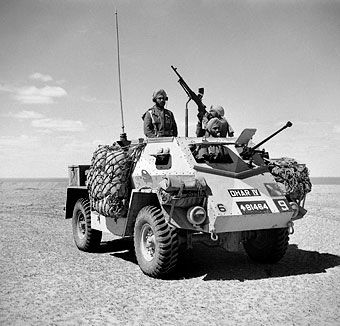
The first armored vehicle to be built and used by The Princely Federation. While being technologically inferior to the Dominion and Commune, that didn't mean that they couldn't make weapons of war. This particular one was used quite extensively. The Dominion used this to be the basis for their armored cars after they conquered The Federation during the Reunification wars. After gaining southern India, The Dominion of India became The Republic of India.
FanOfHistory
Banned
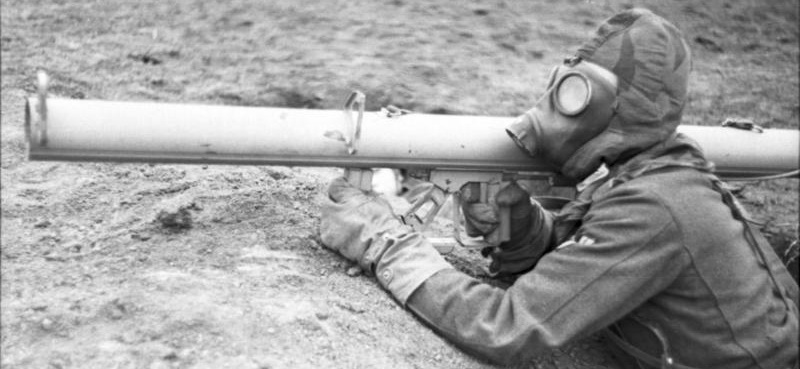
Ukrainian Soldier prepares to fire the Panzerschrek Mk II at oncoming Russian tank. Circa 1945, Savinkov's Ukrainian Offensive
After the first Panzerschrek was introduced to the battlefields, a newer and better one was introduced within a year. The new one didn't have the protective shield the first one had and it was more smaller and more portable, akin to the US bazooka.
The Ukrainian Offensive was the last Russian push of the whole war. The Ukraine seemed like easy pickings at the time since almost all the other German puppets had fallen, and initially the push was successful. At Kyiv, however, the Russians were bloodied and stopped on the Dneiper River. After that, Ukraine was a secondary front for the Russians until things went bad. After being forced out of Poland, most of Belorussia, and 25 miles east of the Dneiper, Savinkov needed another victory. Russia wasn't lacking in manpower, it was lacking support for the war. Taking the Ukraine would boost morale, give Russia all the resources of the Ukraine and deal a real blow to Germany.
To begin the attack, Savinkov authorized the first use of gas in The Second Weltkreig. The attack went well at first, with the tanks overcoming the defenses, but soon the attack became bogged down and then stopped completely. The counterattack retook all lost land and pushed deeper into Russian-held territory. The failure and the loss of more Russian men led the people to openly criticize the government and talk about revolution, not caring about the secret police. The failed offensive had shifted men along the front, leaving certain parts weak. It was these parts that the Germans would exploit and break through during The Push to Smolensk. Losing Smolensk was the final nail in the coffin of Savinkov's Russia, leading to the Tsarist coup less than a month later, pulling Russia out of the Second Weltkreig, and finally, after 6 long years, ending the war in Europe.
FanOfHistory
Banned

Two Russian tanks advancing in Transamur. Circa 1945
After the Tsarist coup, Russia would make speeches about how they're friends with Germany and the rest of Europe and how the main focus should be retaking their core eastern territories, particularly Vladivostok. After getting the armistice, the army would be moved to the Transamur and Manchurian border. When the attack came, it was a complete victory. After spending 5 years fighting Germany, the Russian army had learned very important lessons in perfecting their attack plans. With these lessons and a mostly veteran army, and facing a foe who had no such experience, there was little to stop the Russian advance. In less than a week, the Russians would fight to Harbin and start shelling Vladivostok
FanOfHistory
Banned

British soldiers attempting to hold back the next German onslaught. Circa 1919
The mobility of the German's offensive led to defensive trenches like this in last-ditch efforts to stem the tide. Notice just how primitive they are when compared to the elaborate trench systems of the Western Front.
Note that all photos belong to stagsonwheels on the Paradox Plaza due to their origin in his "Lads on War" AAR for HoI IV:
Winston Churchill, Liberal and 2nd Prime Minister of the restored United Kingdom of Great Banter, handing out reconstruction supplies now that the Onion of Britain and its foul cynicalism had been toppled.
British forces having been deployed to the South African Federation enjoying a break from the lad's tour next to a Nandos opened after the Great Banter-Bantu night out.
I mean... More pls

Main cast of the American Justice Society superhero television extended universe.
The Justice Society universe is about a group of superheroes and vigilantes from disparate backgrounds who form a union to work with the government and negotiate terms for a good relationship, amid an age of tense government/superhero relations. A collaboration between the Action Comics and Detective Comics syndicates and the People's Broadcasting Service, the initial show and its spinoffs were both popular and well-reviewed, inspiring the Marvel comics syndicate to start their own television universe (with the rival Workers' Broadcasting Service) to tie in to their immensely popular movies.
From left to right:
--Oliver Queen/the Hood, a British-In-Exile rich boy who had to flee to America after getting into a dispute with supervillain Major Moneybags. Trained by the League of Assassins in Nepal, he learned how to become the best archer in the world (and to need very little sleep). Now he works as a labor organizer and and homeless-shelter worker by day, while by night he fights crime and capitalism as the Hood. Like Robin Hood, but with a mask. Ollie has some challenges with being subtle. Star of The Hood and co-star on the annual Justice Society crossover miniseries.
--Barry Allen/The Bolt. Equipped with superspeed, this lovable biochemist got his powers in a lab accident. By day he teaches classes and brushes up on lab safety, by night he fights crime as the Bolt! Star of The Bolt and co-star on Justice Society.
--Jeff Pierce/Lightning Man. An African-American single dad, Jeff is a former firefighter who had to quit and become a teacher after being electrocuted on the job. However, the accident gave him badass superpowers, and now he goes out at night in a mask and slings electricity around as the astonishing Lightning Man! Star of The Stupendous Lightning Man! and co-star on Justice Society, as well as co-star on the crossover Superwoman & Lightning Man: Escape from Pelley's America.
--Kara Zor-El/Superwoman. Superman in this TL is a freedom fighter in an evil alternate universe where the AUS won; his cousin Kara was the one to escape Krypton here and landed in the PRUSA. The show is coy on whether or not Kara and longtime comic-book wife Lena Luthor (distaff clone of Superman's best friend and Resistance leader Lex Luthor) will get together or not, making many comic purists angry. Other purists point out that she did date men back in the '50s, so maybe the show's just trying to avoid tying her down or maybe will make her explicitly bi (something even the comics, irritatingly, have never canonized once and for all). Star of Superwoman and co-star on the crossovers Justice Society and Superwoman & Lightning Man: Escape from Pelley's America.
--Sara Lance/White Canary, a lovable sex addict and former assassin. Sister to Oliver's longtime love interest Dinah Lance/Black Canary, Sara was like Ollie trained by the League of Assassins, but set off on her own quest after her girlfriend (the daughter of the League's leader) got stuck time travelling by means of a complicated accident involving a poorly-timed romantic encounter with Sara and the League's leader got pissed ("Unreasonably super fucking buttmad for no good reason", as Sara calls it). Star on Time Warriors: We Suck At Our Jobs (and its succeeding seasons, We Need A Union and We're Still Learning the Ropes, Honest; Time Warriors is decidedly comedic in tone and names its seasons) and co-star on Justice Society.
Not shown but important supporting cast:
--Dinah Lance/Black Canary: Ollie's wife and a superheroine with a sonic attack power. The mother of Ollie's son (they trade off who's on super-duty and who's watching the kid, and get a sitter for the really dangerous bad guys) and older sister of Sara Lance, Dinah is a former actress and triathlete turned police officer.
--Walter West/Velocity: Barry's childhood pal and best bro. They fight crime together; Wally's day job, though, is factory foreman, making automobiles for the American worker. Though he's still young, Wally's set to be re-elected as factory boss at the end of the current season. Wally got his powers in the same accident as Barry.
--Hal Jordan/Captain Lantern: Rarely shows up due to his space cop job and the expense of his CGI. An accomplished fighter pilot and now space cop badass.
--Kal-El/Clark Kent/Superman: A freedom fighter against the oppressive racist rule of the American Union State in a parallel universe that only rarely contacts the show's main timeline. Refugee from a destroyed planet.
--Diana of Themiscyra/Wonder Woman: Heavily rooted in the original conception, the daughter of a menial worker on Themiscyra who led a Syndicalist-inspired revolution and now seeks to use her country's advanced technology to support workers' rights, equality, and democracy across the world. An openly bi sweetheart whose traditional bondage themes are kept just subtle enough for a network show with a massive underage audience.
--Leonard Snart/Kinesis: Sister of Barry's nemesis Lisa Snart/Captain Cold, brother-in-law of Barry's nemesis Mick Snart (nee Rory)/Heatwave, and Barry's current boyfriend. Intelligent but emotionally reserved, he has the power to absorb and redirect kinetic energy, which lets him soak up dozens of hits then send a bad guy flying through a wall with a nose boop.
--Alex Danvers/Agent X: Superwoman's stepsister (Alura made it to Earth with Kara and remarried a human), a badass secret agent created specifically for the Justice Society universe who's later turned into a cyborg supersoldier by bad guys, and turns on them when Kara breaks her mind-control implant. Currently in a love triangle with Chair of the Workers' Senate Lois Lane's clone from a crossover in the second season who stuck around (it's complicated), and Kryptonian superheroine Astra In-Ze/Nightfall.
--Martin Cajal/Ironheart: A Romanian Jewish survivor of Codrenau's pogroms and a university professor, the elderly Cajal was infused with dark matter in a lab accident (the same one as Barry--this is a running gag) and gained the ability to transform into a steel warrior with extremely durable metal skin and super-strength. A kindhearted if somewhat stuck-up old fellow, Ironheart is the muscle of the Time Warriors.
--Wu Xianyu/Firestorm and Georges Marcelle/Firestorm: An outgoing, athletic Chinese Syndicalist woman and a shy, nerdy Frenchman who together can fuse their bodies into the superhero Firestorm (thanks, Barry and your poor lab safety standards!). The artillery of the Time Warriors.
--J'onn J'onzz/Martian Manhunter: A close friend of Superwoman and a refugee from the planet Mars, Martian Manhunter is an affable if reserved shapeshifter who masquerades as a Native American, part of Superwoman's pledge to cast more actors of traditionally-victimized backgrounds.
--George Lincoln Rockwell/Master-Man: Superman's nemesis, was stranded in the main Justice Society universe during a crossover. A psychopathic Nat-Pop and Dominionist racist, he tries to start a new KKK to launch a crusade from within against America. Main villain on season 4 of Superwoman.
--Billy Wintergreen/Deathstroke the Terminator: A psychopathic mercenary and an early villain for Ollie. Killed and had his identity stolen by Barry's friend Slade Wilson/Deathstroke II when the latter was having super-life problems. It's complicated. Slade's currently a good guy and going through a quiet semi-emo phase to atone for the stuff he did while high on a supervillain's mind-control juice.
--Eobard Thawne/Blitzen: A rich German capitalist and speedster from a dystopian possible future who seeks to kill the Bolt and prevent the rise of a worker-friendly world order that would eliminate his profits.
--Cisco Ramon/Vibe: Evil alternate-universe doppelganger of Barry's dead friend Francisco, who was killed taking down Blitzen in the first season. Vibe can create teleportation portals, and has telekinesis and clairvoyant powers.
--Caitlin Snow/Snow Queen: Cryokinetic super, scientist, and close ally of Velocity's. Has a long-running rivalry with Lisa Snart/Captain Cold over whose ice is colder. They're a little goofy that way. Got her powers thanks to Barry's shit lab safety.
--High Commandant Komand'r/Darkfire: Tamaranean warlord and renegade working for the Citadel Empire, invades Earth in season 2 of Superwoman.
--Maxwell Lord/Lord Business: Mad scientist and capitalist abuser who seeks to overthrow the Red American way of life. Main villain of seasons 1 and 3 of Superwoman.
--Kayla Pierce/Dynamo and Tynisha Pierce/Thunder: Jeff Pierce's daughters, a medical student and lawyer specializing in LGBT clients, who have superpowers of their own (electricity generation and superstrength) and fight crime alongside their dad.
Productions so far:
The Hood: 7 seasons, the show that started it all. Currently at nearly 160 episodes and rising.
The Bolt: 5 seasons, started the wider universe going.
Superwoman: 4 seasons.
The Stupendous Lightning Man!: 4 seasons.
Time Warriors: We Suck At Our Jobs, We Need A Union, and We're Still Learning The Ropes, Honest: 3 seasons total.
Hood and Bolt: Time Crisis: 4-episode special miniseries.
Superwoman & Lightning Man: Escape from Pelley's America!: 6-episode crossover miniseries.
Justice Society: 3 mini-seasons; Return to Pelley's America!, 6 episodes, Dawn of the Dominators, 6 episodes, Into the Führerreich!, 6 episodes.
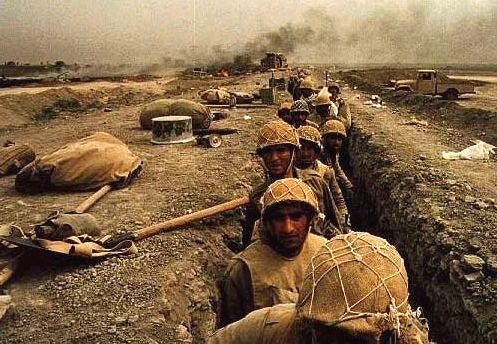
Egyptian volunteers enter defensive positions inside rudimentary trenches during the Persian-Arabian War (1978-1983)
After pushing Ottoman forces back into Anatolia, the old empire, at long last, collapsed in on itself. As the new independent Turkish nation surrendered and consolidated its power, border squabbles resulted in the dissolution of the Cairo Pact. The fragile peace lasted for thirty years, until the aggressive Saudi monarch launched an assault to force Persia to give up their gains in Mesopotamia. The war turned into stalemate within a year, and the fighting devolved into World War One-like tactics, including trench warfare and constant artillery barrages on enemy lines. The conflict resulted in almost 600,000 combined casualties, making it one of the most devastating post-Second Weltkrieg conflicts.
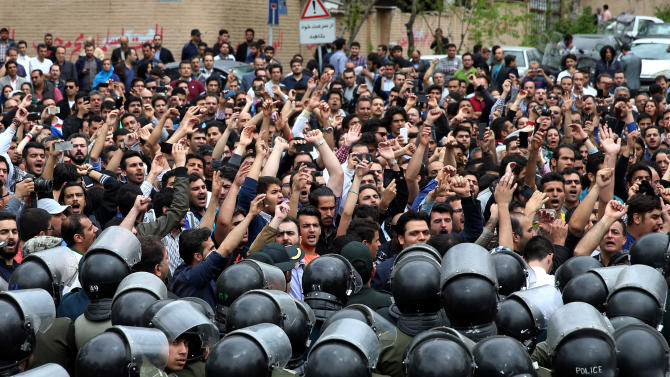
Protesters stand outside a Saudi government building, only a few days before the Arabian Revolution (2007, colorized)
75 years of oppressive government, their defeat in the Persian-Arabian war, and yet another stalemate in their war against Yemen proved to be too much for the Saudi people to tolerate. On the first day of Ramadan, September 12th, 2007, partisans and part of the Saudi Royal army marched in the royal palace and deposed King Salaman, ending the Arabian-Yemeni war and triggering what historians called "The Arab Spring", which resulted in the removal of all monarchies in the Arabian Peninsula and leading to a civil war in Oman.
Sounds like the KR equivalent of the Iran-Iraq war also what were the Persians like in this KR timeline did they retain the Shah or become a Republic
Egyptian volunteers enter defensive positions inside rudimentary trenches during the Persian-Arabian War (1978-1983)
After pushing Ottoman forces back into Anatolia, the old empire, at long last, collapsed in on itself. As the new independent Turkish nation surrendered and consolidated its power, border squabbles resulted in the dissolution of the Cairo Pact. The fragile peace lasted for thirty years, until the aggressive Saudi monarch launched an assault to force Persia to give up their gains in Mesopotamia. The war turned into stalemate within a year, and the fighting devolved into World War One-like tactics, including trench warfare and constant artillery barrages on enemy lines. The conflict resulted in almost 600,000 combined casualties, making it one of the most devastating post-Second Weltkrieg conflicts.

Protesters stand outside a Saudi government building, only a few days before the Arabian Revolution (2007, colorized)
75 years of oppressive government, their defeat in the Persian-Arabian war, and yet another stalemate in their war against Yemen proved to be too much for the Saudi people to tolerate. On the first day of Ramadan, September 12th, 2007, partisans and part of the Saudi Royal army marched in the royal palace and deposed King Salaman, ending the Arabian-Yemeni war and triggering what historians called "The Arab Spring", which resulted in the removal of all monarchies in the Arabian Peninsula and leading to a civil war in Oman.
Alexei Navalny leader of the United Democratic Party and President of Russia (2012-present) he became one of the leading central figures during the Russian Revolution of 2010 when the Russian People tired of the one-party authoritarian rule of the Second Russian Empire led by the Neo-Savnikovist Patriotic Motherland Movement and Tsar Sergei Wrangel along with there outspoken Prime Minister Valdamir Zhirinovsky the Revolution began after the European Winter when a number of Nat Pop regimes throughout Eastern Europe, Middle East, and the Sino-Russian war against the Cordale Entente (Asia-Pacific Co-Prosperity Sphere, the Entente and the remants of Mittleuropa rolled into one faction) which ended in disaster for Russia. Alexei is seen here after escaping a motherland pruficatiin camp following a prison riot outside Moscow folowed by a thousands of protesters waving the flags of the Russian Republic confronting the Okhrana secret police and Black Hundreds militiamen outside of Winter Palace in Petrograd they proced to overpower the police and militamen and stormed the winter palace where they managed to find Vladamir on the roof waiting for a helicopter (which was shot down by members of the Russian Army who joined the revolution)
Sounds like the KR equivalent of the Iran-Iraq war also what were the Persians like in this KR timeline did they retain the Shah or become a Republic
I don't really have a consistent head-canon, but in this one, Iran becomes a republic, eventually becoming one of the most stable democracies in Asia. I assume the newfound loyalty and democratic pride led them to victory in the war over the dynastic, oppressive Saudis.
Neither do i but i was curiousI don't really have a consistent head-canon, but in this one, Iran becomes a republic, eventually becoming one of the most stable democracies in Asia. I assume the newfound loyalty and democratic pride led them to victory in the war over the dynastic, oppressive Saudis.

Leonard Brezhnev poses for a photo (1978, colorized)
Brezhnev took over as Chairman after the sudden death of Nikolai Bukharin's successor in 1966. His rule would result in the transition of the Soviet Republic from a libertarian, semi-peaceful country, to a more authoritarian, Bolshevik-oriented one. Brezhnev considered the Treaty of Minsk (A non-aggression deal between war-torn Germany and the Soviet Republic which resulted in the UBD and White Ruthenia being transferred to the Moscow government in exchange for a non-aggression pact) as an act of weakness and did not go far enough in threatening the Empire, and he was a firm believer in annexing the remainder of Germany's eastern puppet states.
Brezhnev's rule was almost considered a Totalist one. Critics of the regime point out his purges that killed thousands of party members and officials and his wars of aggression against the Caucuses states and his constant aggression and harassment of Japan and her sphere. The Chairman ruled until 1980, when a rogue Japanese agent shot him in Leningrad. Following the assassination, all ethnic Japanese within the Soviet Republic were either sent to gulags, exiled to Japan or the Ukraine, or worse yet, tortured and killed.
Last edited:
FanOfHistory
Banned
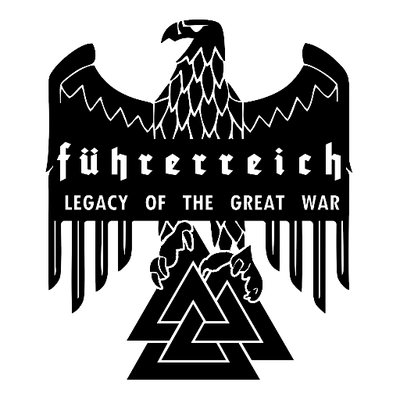
Cover of the immensely popular alternate history novel Fuhrerreich: Legacy of the Great War
The book asks a very popular question within the alternate history community:What if Germany lost The First Weltkrieg? The book starts in 1936 and covers the preparation phase and ends with the first shots of what's called The Second Great War being fired. Fans await the coming of the next book in the series.
The book is not without its criticisms, particularly concerning the world set up. Many people have pointed out the implausibility of the Entente setting up a rump Rhineland state and Denmark taking Schleswig-Holstein. Despite all this, the book is still a great read, setting up what's likely to be a very interesting Second Weltkrieg.
Share:
